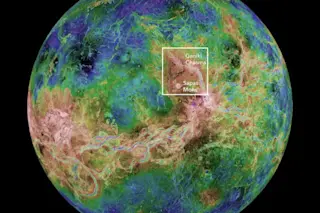Radar image of the surface of Venus, assembled from Magellan data. Ganiki Chasma and Sapas Mons are shown in the white box -- possibly the sight of active volcanism. NASA/JPLEruptions readers have lots of great questions about volcanoes and this summer, I want to tackle some of them. So, for the rest of the summer while I’m in and out of the office, I’ll be trying to answer one reader question per week (along with trying to keep up with the usual volcanic news goodies). If you want to submit a question, you can send it to me (eruptionsblog at gmail), tweet it to me (@eruptionsblog) with the hashtag #summerofvolcanoes (or just #sofv) or leave it as a comment below. This week’s question might not have been submitted in this round, but is a question I get frequently and with some new news to help elucidate the question, I thought ...
Are There Active Volcanoes on Venus?
Discover the evidence for active volcanoes on Venus, including insights from Ganiki Chasma and Sapas Mons. Click to uncover volcanic secrets!
More on Discover
Stay Curious
SubscribeTo The Magazine
Save up to 40% off the cover price when you subscribe to Discover magazine.
Subscribe













